Discover 15 hidden attractions, cool sights, and unusual things to do in Vitoria-Gasteiz (Spain). Don't miss out on these must-see attractions: Ajuria Enea, Church of San Miguel, and Museum of Fournier de Naipes. Also, be sure to include Cathedral of María Inmaculada of Vitoria in your itinerary.
Below, you can find the list of the most amazing places you should visit in Vitoria-Gasteiz (Basque Country).
Table of Contents
Ajuria Enea
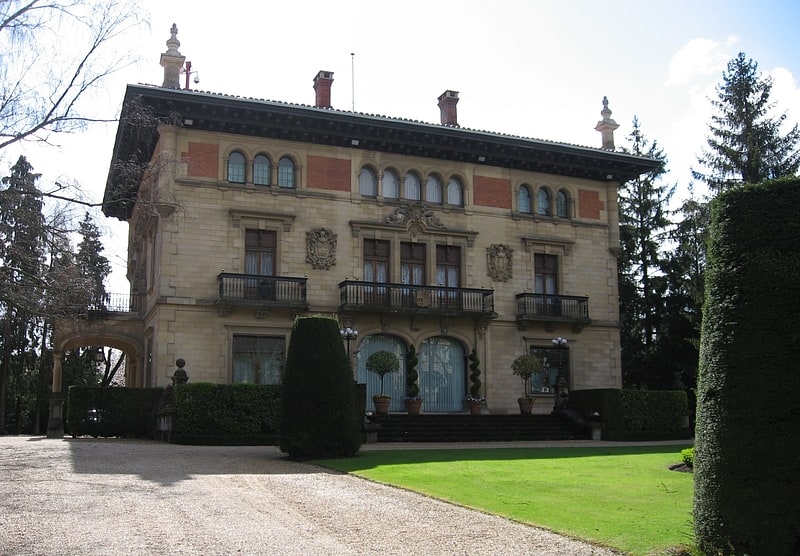
Local government office in Vitoria-Gasteiz, Spain. The Palace of Ajuria Enea is a building in Vitoria-Gasteiz, northern Spain. It is the official residence of the Lehendakari.
The building, chosen to be official residence on the basis of its architectural merits, was purchased by the Basque Government from its former owner, the Provincial Council of Álava, in 1980. That same year it was occupied by Carlos Garaikoetxea, first President of the Basque Government after the restoration of democracy in Spain.
The palace, which was built in 1920 by Swiss architect Alfredo Baeschlin and contractor Hilarión San Vicente for local industrialist Serafín Ajuria, displays architectural elements of neo-Basque art on the façade. After being the residence of the Ajuria family, in 1966 it was handed over to the religious order of the Madres Escolapias, who used it as a school. Six years later, in 1972, it was purchased by the Provincial Council of Álava for conversion into a museum of Basque art, and it was open to the public for two years until it became the Lehendakari’s official residence.[1]
Church of San Miguel
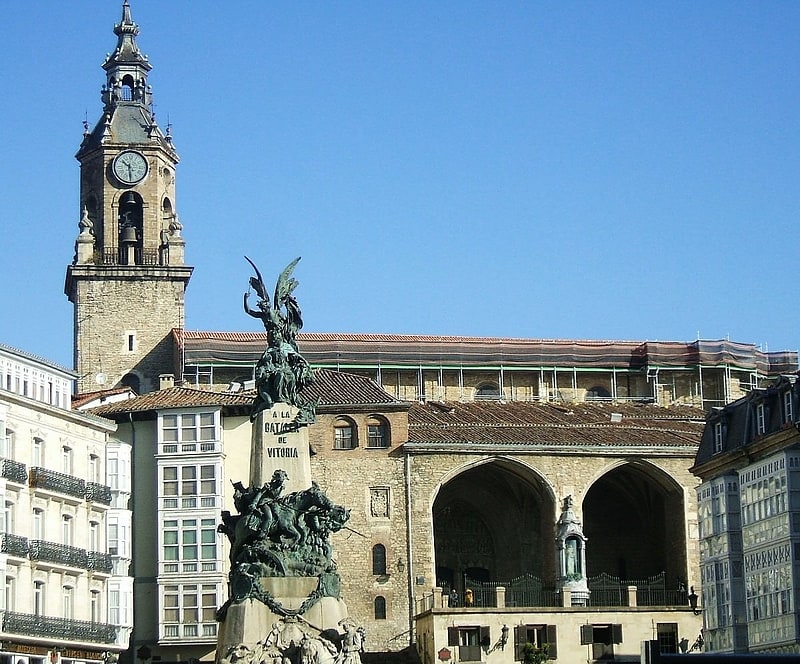
Also known as: Iglesia de San Miguel Arcángel
Catholic church in Vitoria-Gasteiz, Spain. The Church of San Miguel is a church located in Vitoria, Spain. It was declared Bien de Interés Cultural in 1995.
The retable of the church is a baroque altarpiece; it is one of the finest works by Gregorio Fernández and his workshop.[2]
Address: Plaza de la Virgen Blanca, 01001 Vitoria-Gasteiz (Distrito 1)
Museum of Fournier de Naipes

Also known as: Museo Fournier de Naipes
Museum. The Fournier Museum of Playing Cards is a playing card museum located in Vitoria, Spain. It originated as a private collection in 1916 by Félix Alfaro Fournier, the grandson of the founder of Naipes Heraclio Fournier. It was bought by the government of Álava and was declared Bien de Interés Cultural in 1984. In 1994, it moved to its current location in the Bendaña palace which it shares with the Álava Museum of Archaeology.[3]
Address: Aiztogile Kalea, 54, 01001 Vitoria-Gasteiz (Distrito 1)
Cathedral of María Inmaculada of Vitoria

Also known as: Catedral de María Inmaculada
Cathedral in Vitoria-Gasteiz, Spain. The Cathedral of María Inmaculada de Vitoria (Basque: Maria Sortzez Garbiaren katedrala, Spanish: Catedral de María Inmaculada de Vitoria, usually known as "The new Cathedral" is a Neogothic-style, Roman Catholic cathedral located in Vitoria-Gasteiz, Basque country, Spain. It was built in the first half of the 20th century.[4]
Address: Cadena eta Eleta Kalea, s/n, 01001 Vitoria-Gasteiz (Distrito 2)
Basilica of San Prudencio de Armentia

Also known as: Basílica de San Prudencio de Armentia
Basilica in Vitoria-Gasteiz, Spain. The Basilica of San Prudencio de Armentia is a basilica located in Armentia, Spain. It was declared Bien de Interés Cultural in 1931.[5]
Address: Armentiabo Bidea, 24, 01007 Vitoria-Gasteiz (Distrito 2)
House of Cordón
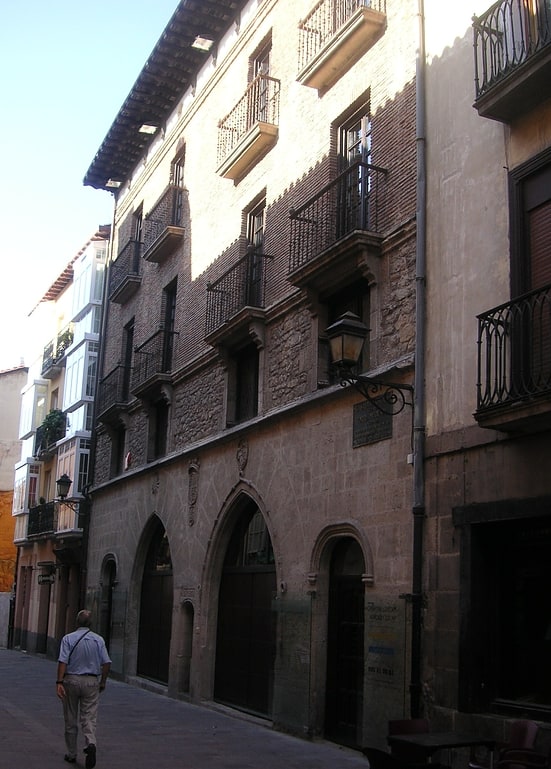
Also known as: Casa del Cordón
The House of Cordón is a building located in Vitoria, Spain. It was declared Bien de Interés Cultural in 1984. The house is supossedly one of the first stone houses.[6]
Address: Calle Cuchilleria, 24, 01001 Vitoria-Gasteiz (Distrito 1)
Cathedral of Santa María de Vitoria
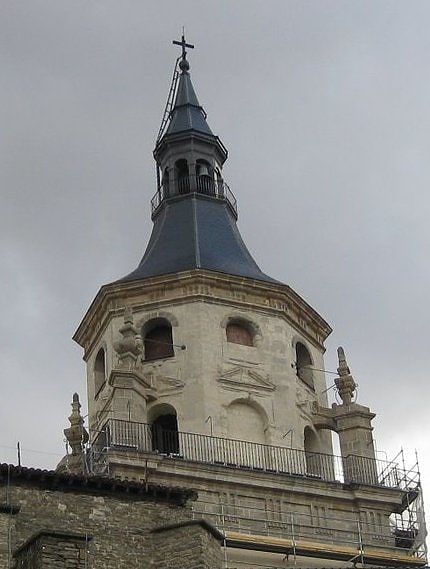
Also known as: Catedral de Santa María
Gothic cathedral with ornate carvings. The Cathedral of Santa María de Vitoria is a Gothic-style, Roman Catholic cathedral located in Vitoria-Gasteiz, Basque country, Spain. It was declared Bien de Interés Cultural in 1931.[7]
Address: Santa Maria Plaza, s/n, 01001 Vitoria-Gasteiz (Distrito 1)
Los Arquillos
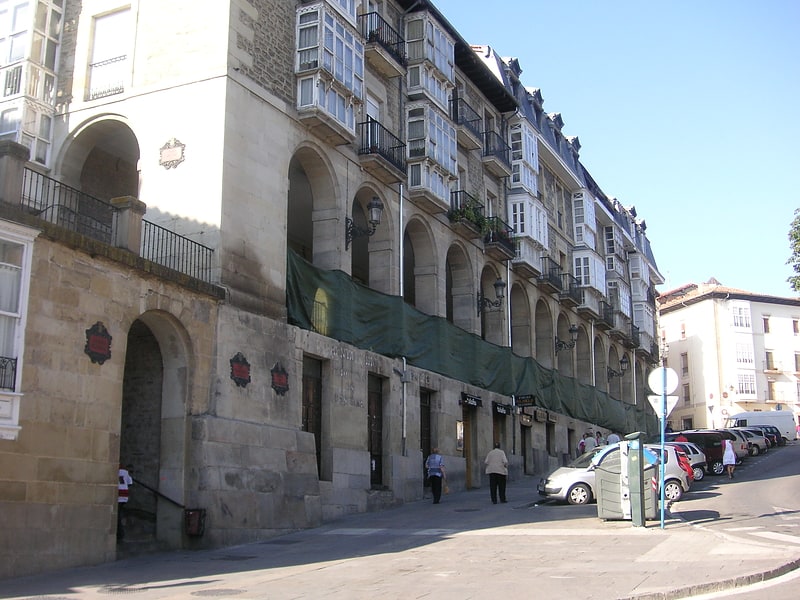
Historical landmark in Vitoria-Gasteiz, Spain. The Los Arquillos is an 18th-century structure located in Vitoria, Spain. It was architecturally designed to link the old part of the town situated on the higher ground with the new part of the town then under construction on lower ground.
It was declared Bien de Interés Cultural in 1984.[8]
Church of San Vicente Mártir
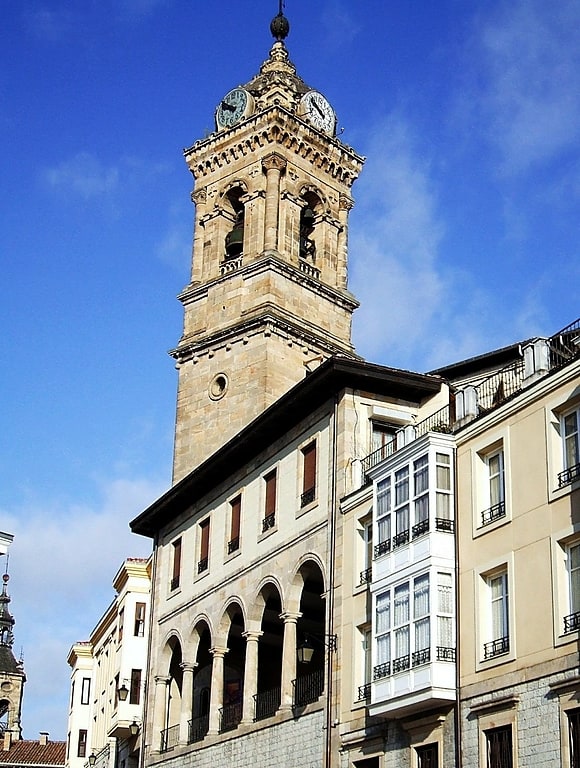
Also known as: Iglesia de San Vicente Mártir
Catholic church in Vitoria-Gasteiz, Spain. The Church of San Vicente Mártir is a church located in Vitoria, Spain. It was declared Bien de Interés Cultural in 1984.
The church is named after Saint Vincent of Saragossa, the 4th century martyr.[9]
Address: Cuesta de San Vicente, 4, 01001 Vitoria-Gasteiz (Distrito 1)
Plaza de la Virgen Blanca
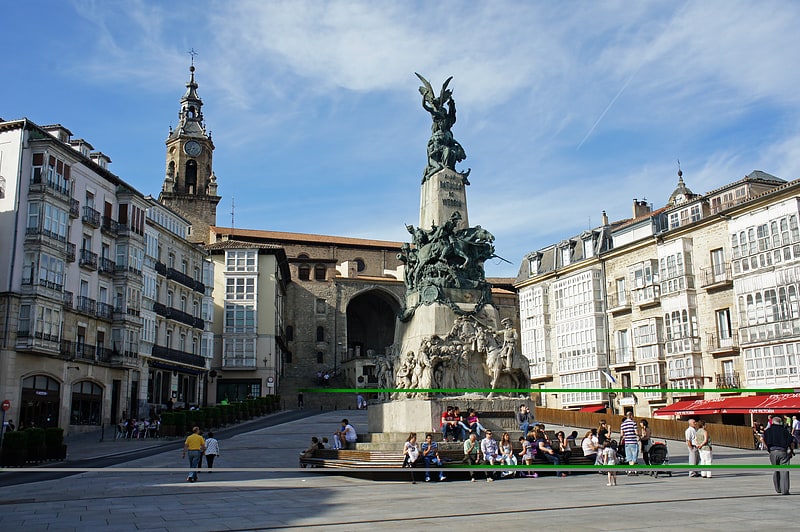
Historical landmark in Vitoria-Gasteiz, Spain. Plaza de la Virgen Blanca is one of the oldest meeting points in Vitoria-Gasteiz in the Basque Country of Spain. In the middle of it there is the monument to La batalla de Vitoria a battle which took place in the city in 1813 during the Napoleonic wars.[10]
Address: Zapatari Kalea, 35, 01001 Vitoria-Gasteiz (Distrito 1)
Church of San Pedro Apóstol
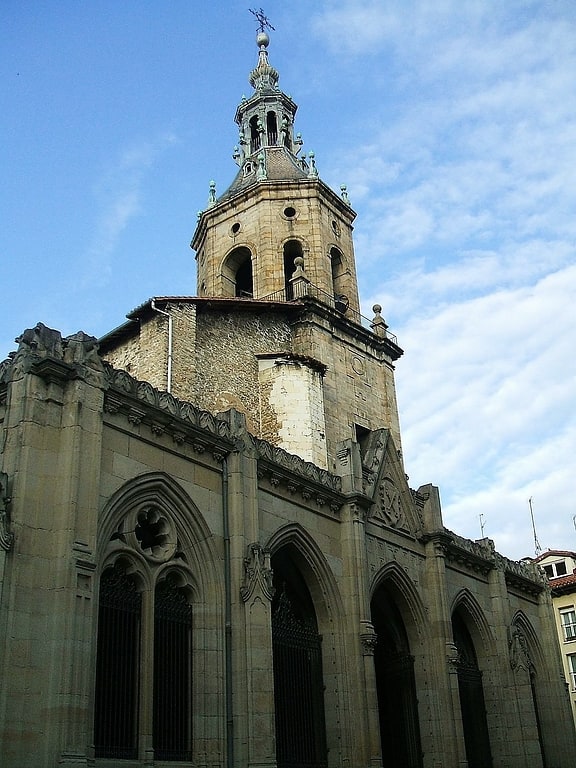
Also known as: Iglesia de San Pedro Apóstol
Catholic church in Vitoria-Gasteiz, Spain. The Church of San Pedro Apóstol is a medieval church located in Vitoria, Spain.
It was declared a national monument in 1931 and is currently classed as a Bien de Interés Cultural.[11]
Address: Fundadora de las Siervas de Jesus Kalea, 2, 01001 Vitoria, Álava (Distrito 1)
Sanctuary of Nuestra Señora de Estíbaliz
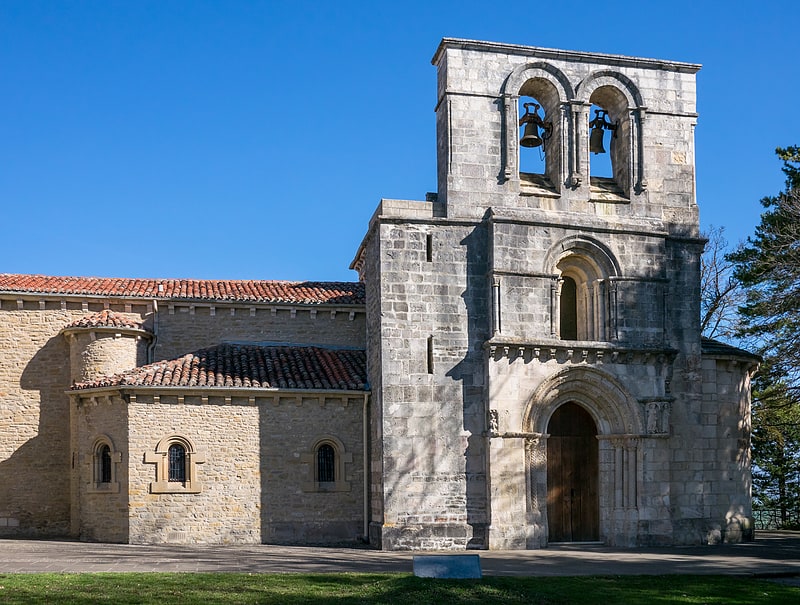
Also known as: Santuario de Nuestra Señora de Estíbaliz
Medieval sanctuary on a hill in a park. The Sanctuary of Nuestra Señora de Estíbaliz is a sanctuary located in Argandoña within the municipality of Vitoria-Gasteiz, Álava, Spain. It is surrounded with green forests and it has the view of the entire province as it is located in a small hill 9 km away from the city of Vitoria-Gasteiz. Here stands the patroness of Álava. It was declared Bien de Interés Cultural in 1931.[12]
Address: Estibaliz Entitatea, 01193 Vitoria-Gasteiz
Armentia

Armentia is one of the villages associated with Vitoria-Gasteiz. Its name comes from the Latin word armentum, which translated into English means "intensive farming". The village is well known for its 161ha park created in the 1998.[13]
La Florida Park
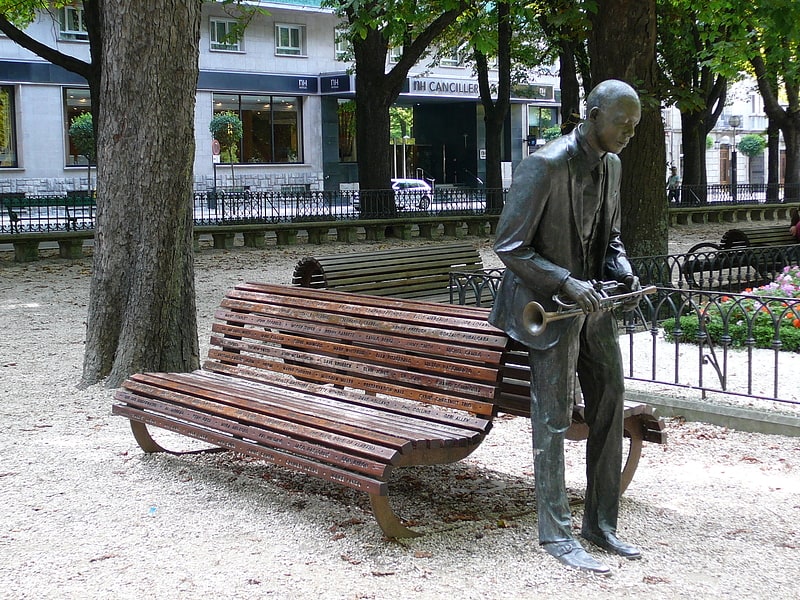
La Florida is a park in Vitoria-Gasteiz, Álava, Spain. It was built between 1820 and 1855 in neoclassical style by the architects Angel Chavez, Juan De Velasco, Ramón Ortés De Velasco and Manuel Arana. The birth of Florida is dated 1820 when they built the existing ring that surrounds the music kiosk. For the actual 32,454 square meters land used the former convent of Santa Clara, and as much as planners have insisted later, there is nothing similar in the new green spaces in Vitoria.
The park is oval and is crossed by two main roads that divide it into quadrants. The roads are perpendicular to each other and intersect in a large circle at the middle of this space. In this circular space is a metal kiosk built in 1890. Each of the squares of the area is bordered by low walls of carved sandstone, which also have small crossed rail-shaped arches.[14]
Address: Calle de Becerro de Bengoa, Vitoria-Gasteiz (Distrito 1)
Plaza de los Fueros
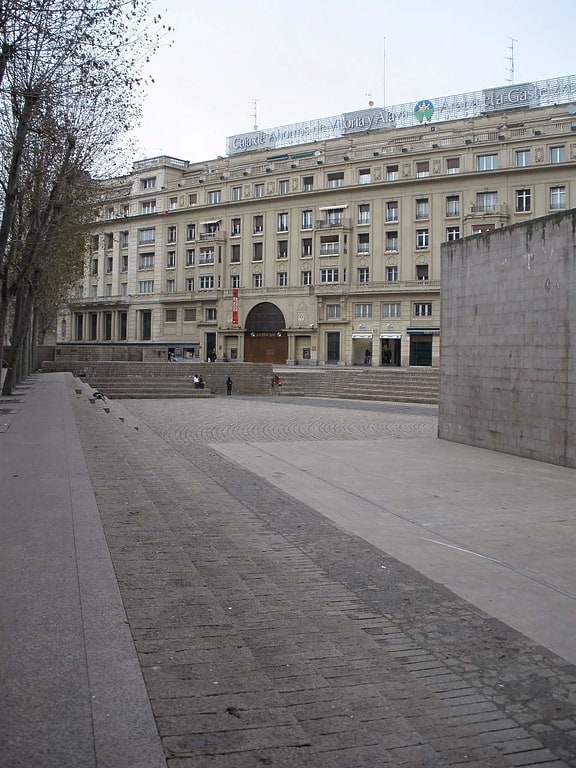
The Plaza de los Fueros is a plaza or square located in the city centre of Vitoria-Gasteiz, which is the capital of the Basque Country, Spain. It was built in 1979 in memory of the county code of laws named fuero in Spanish.[15]